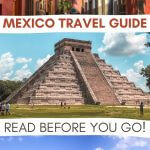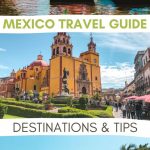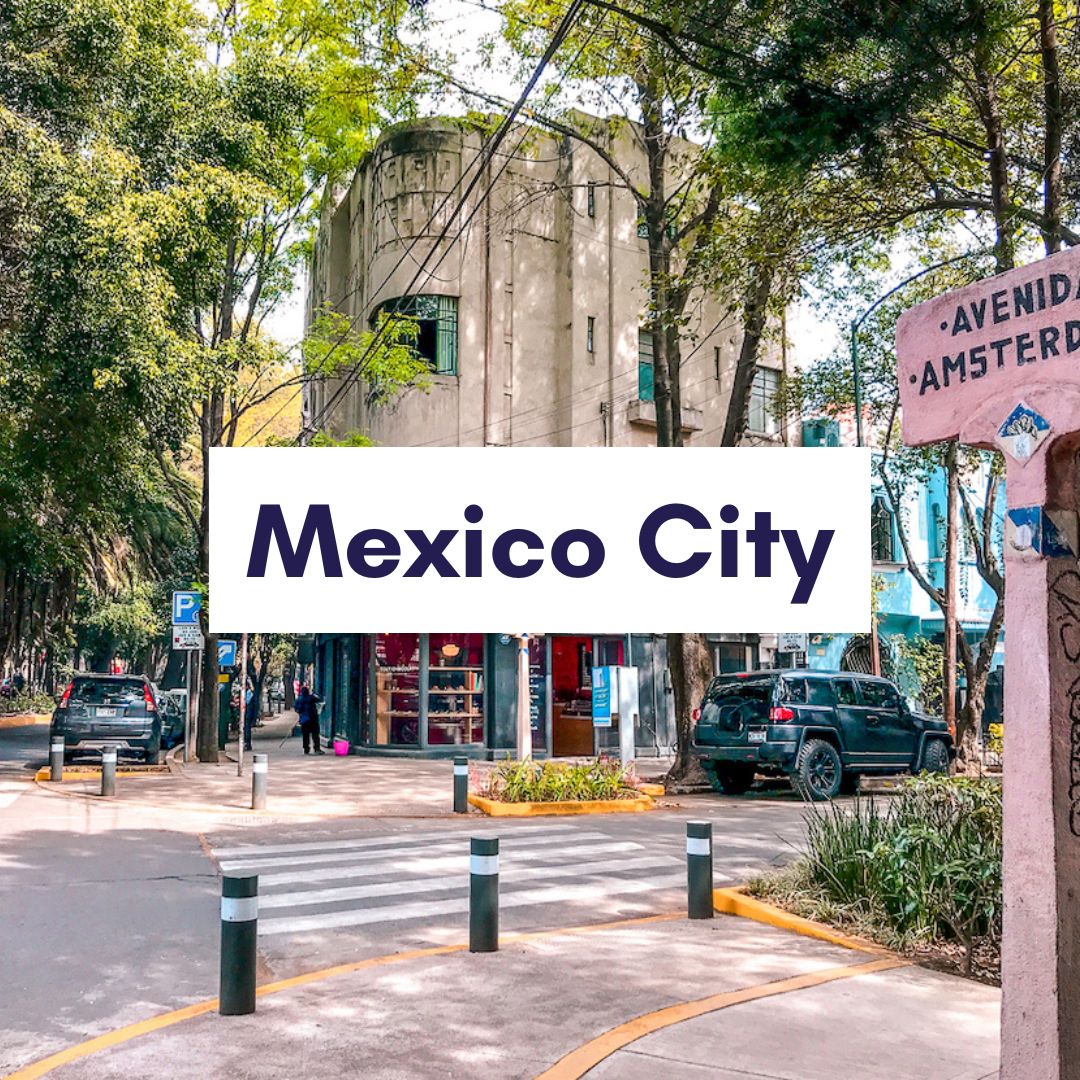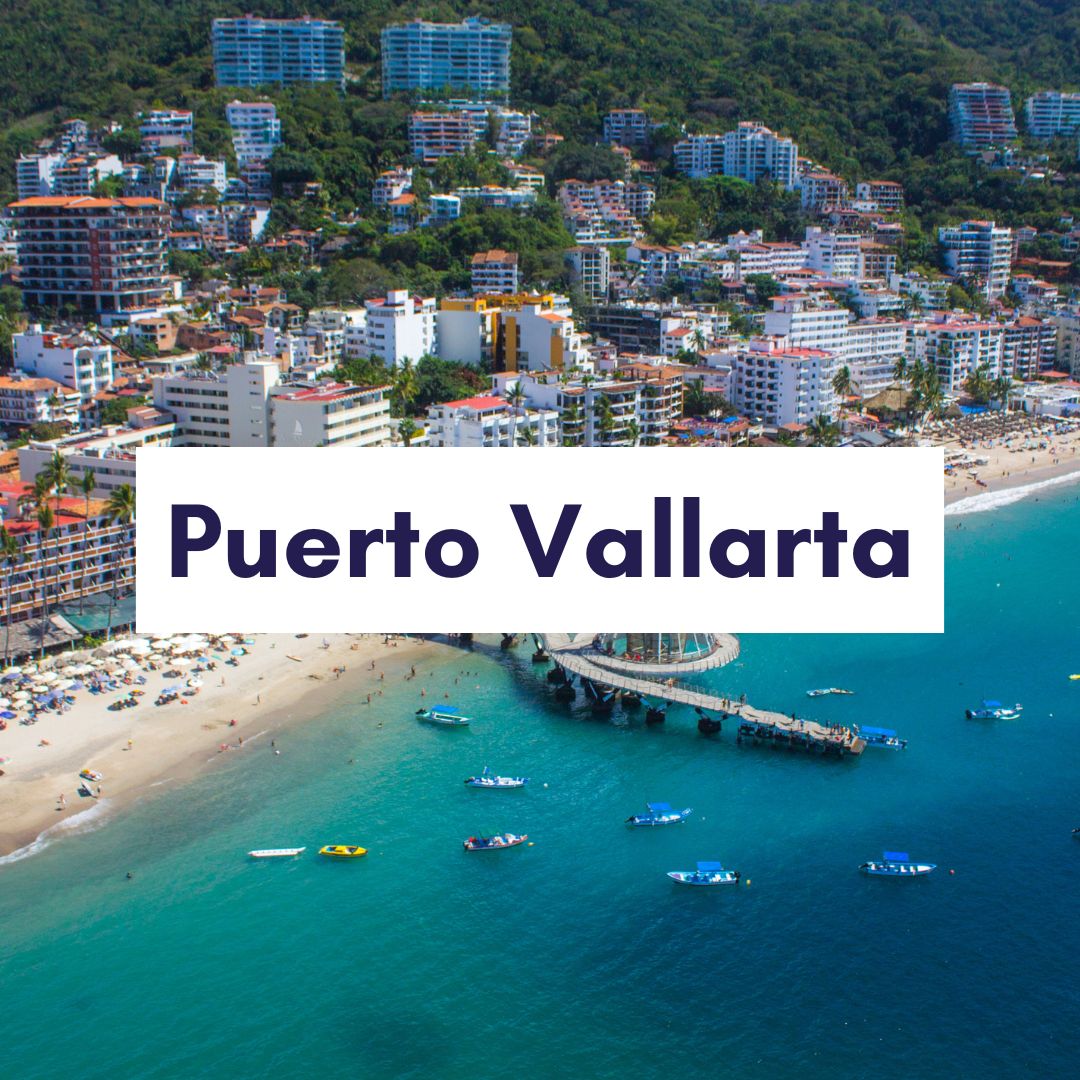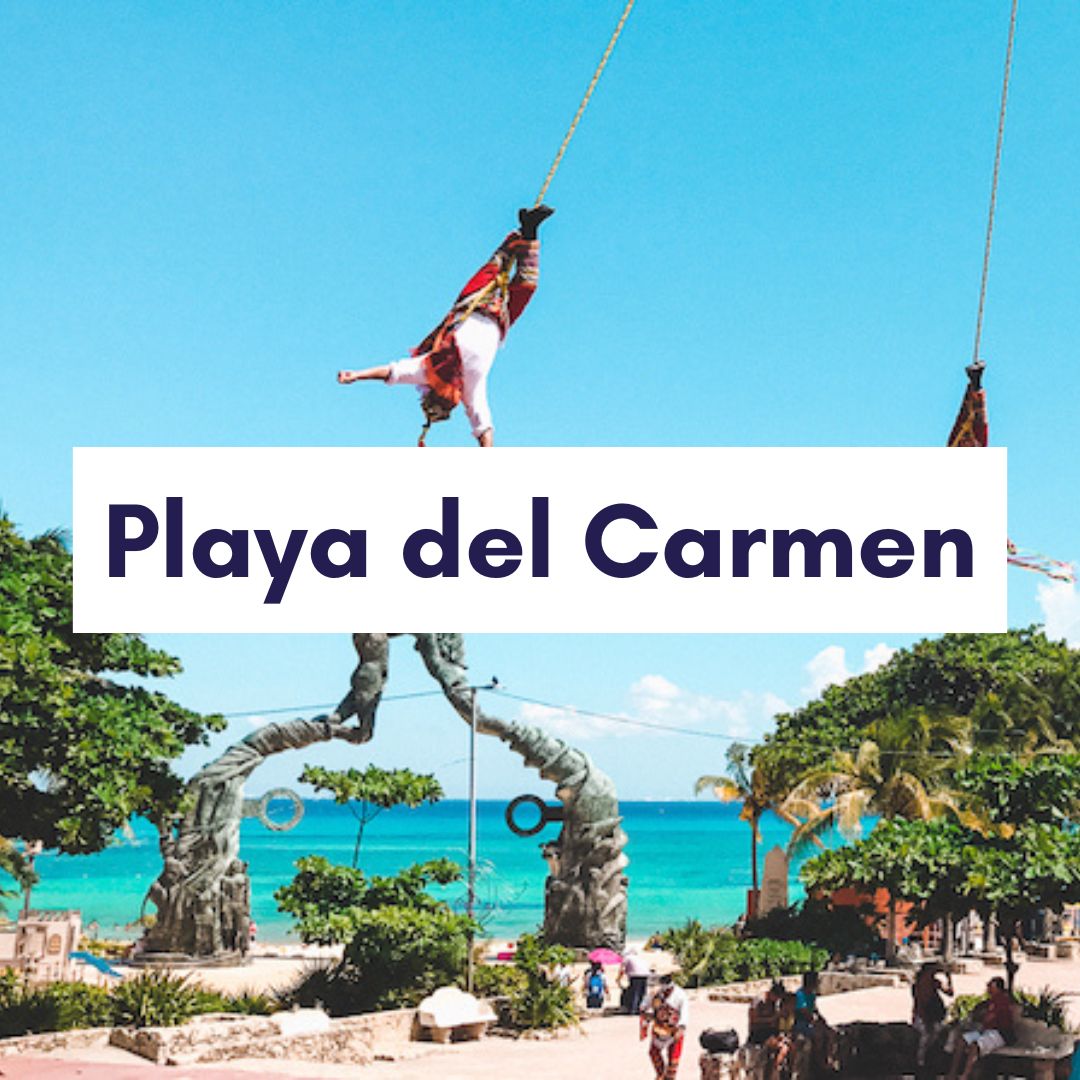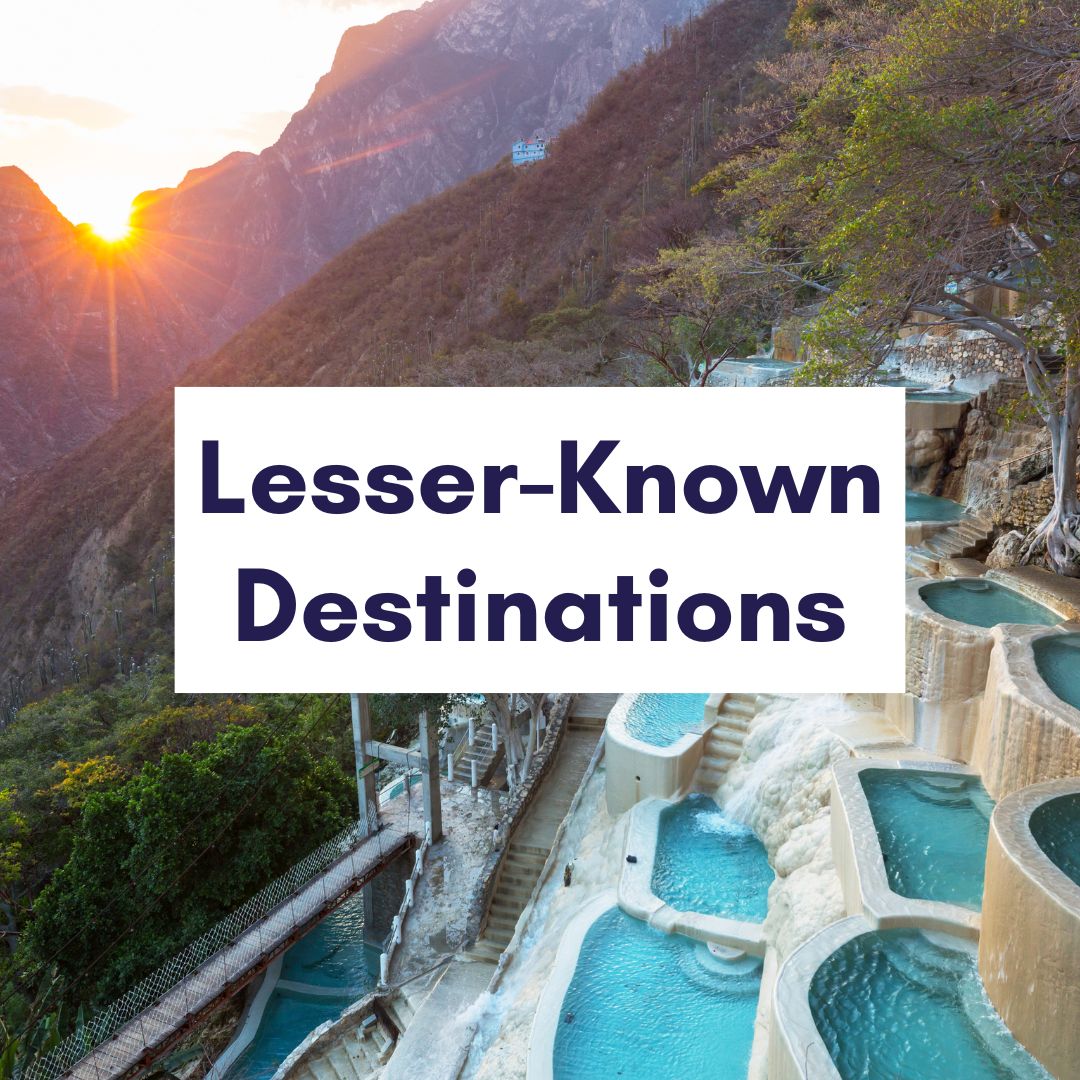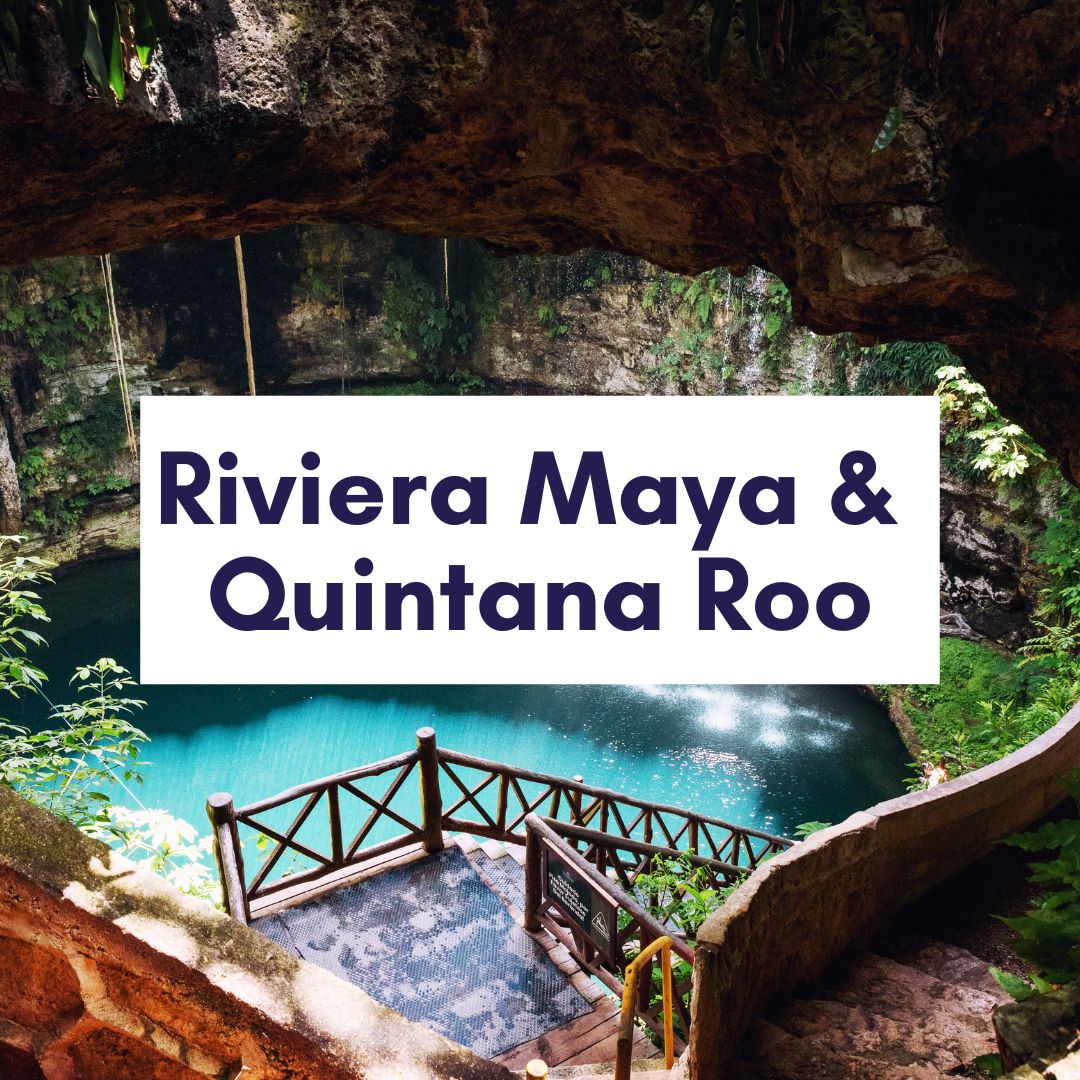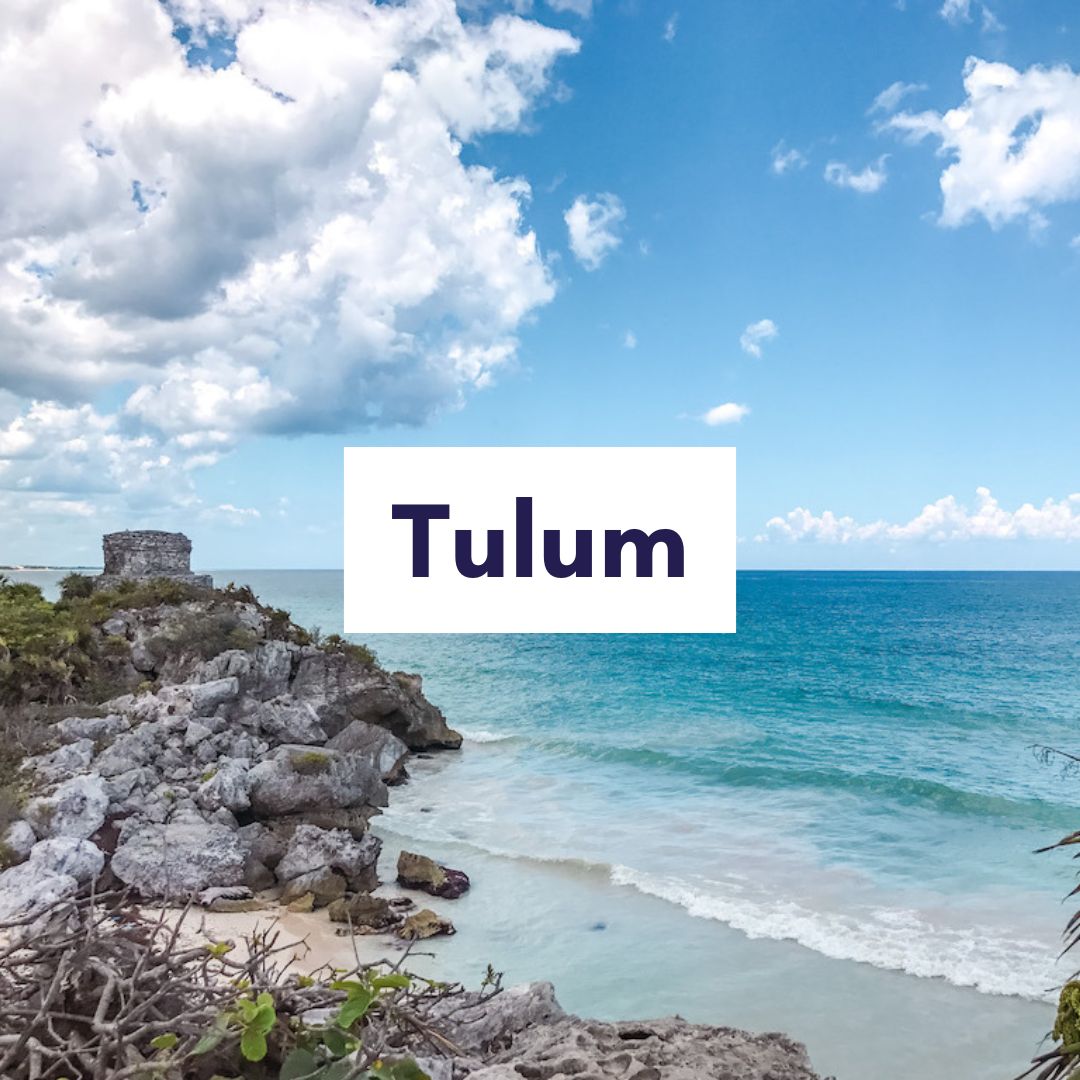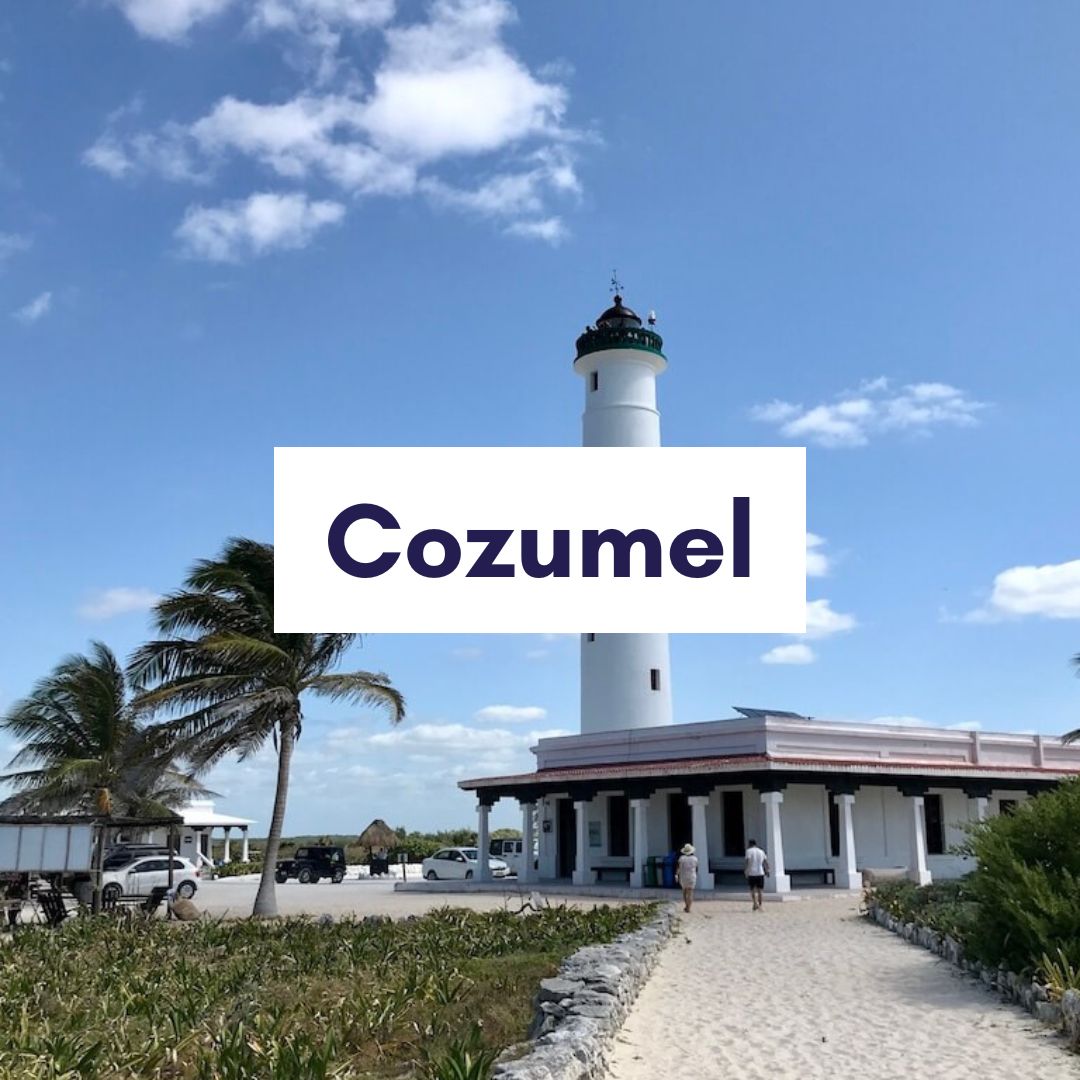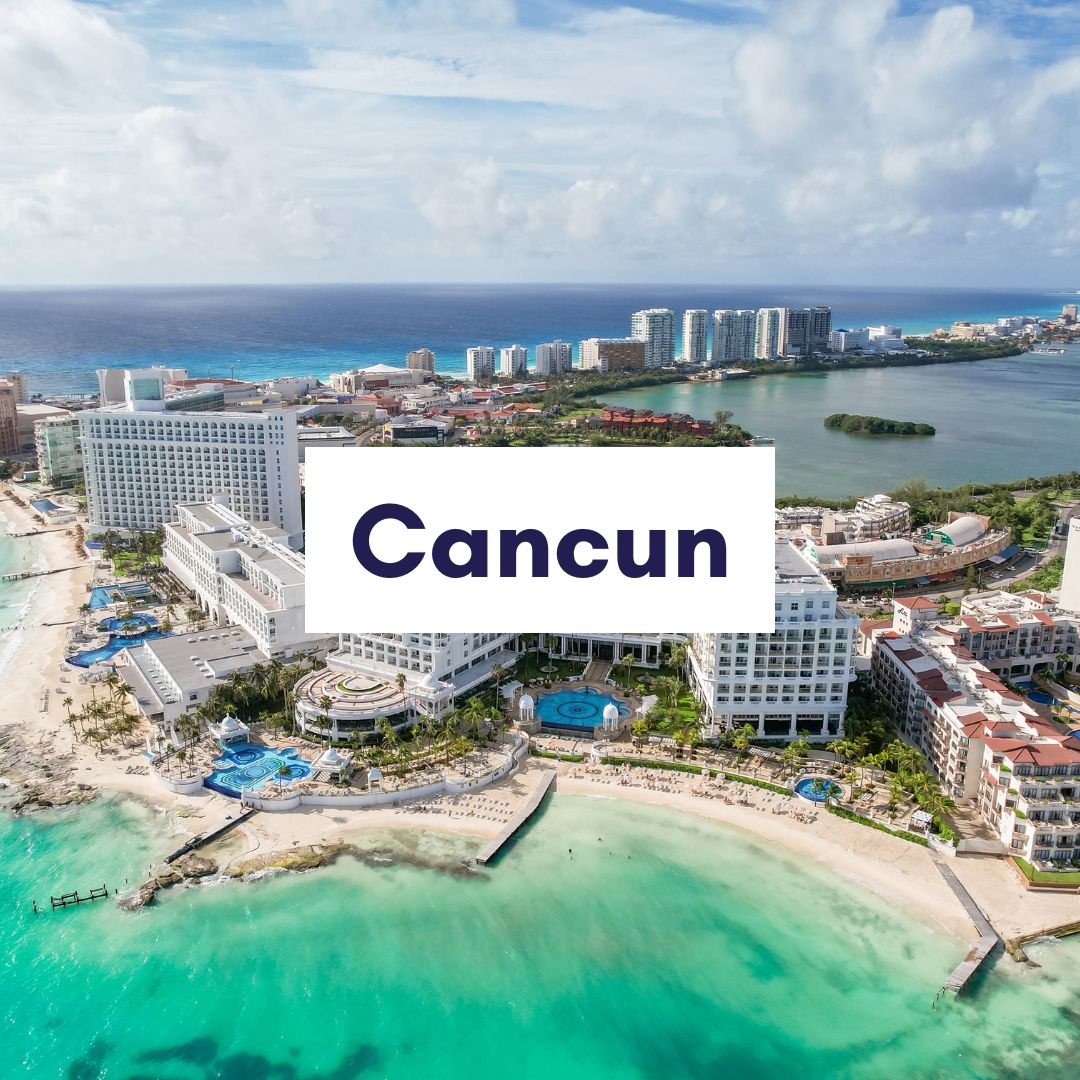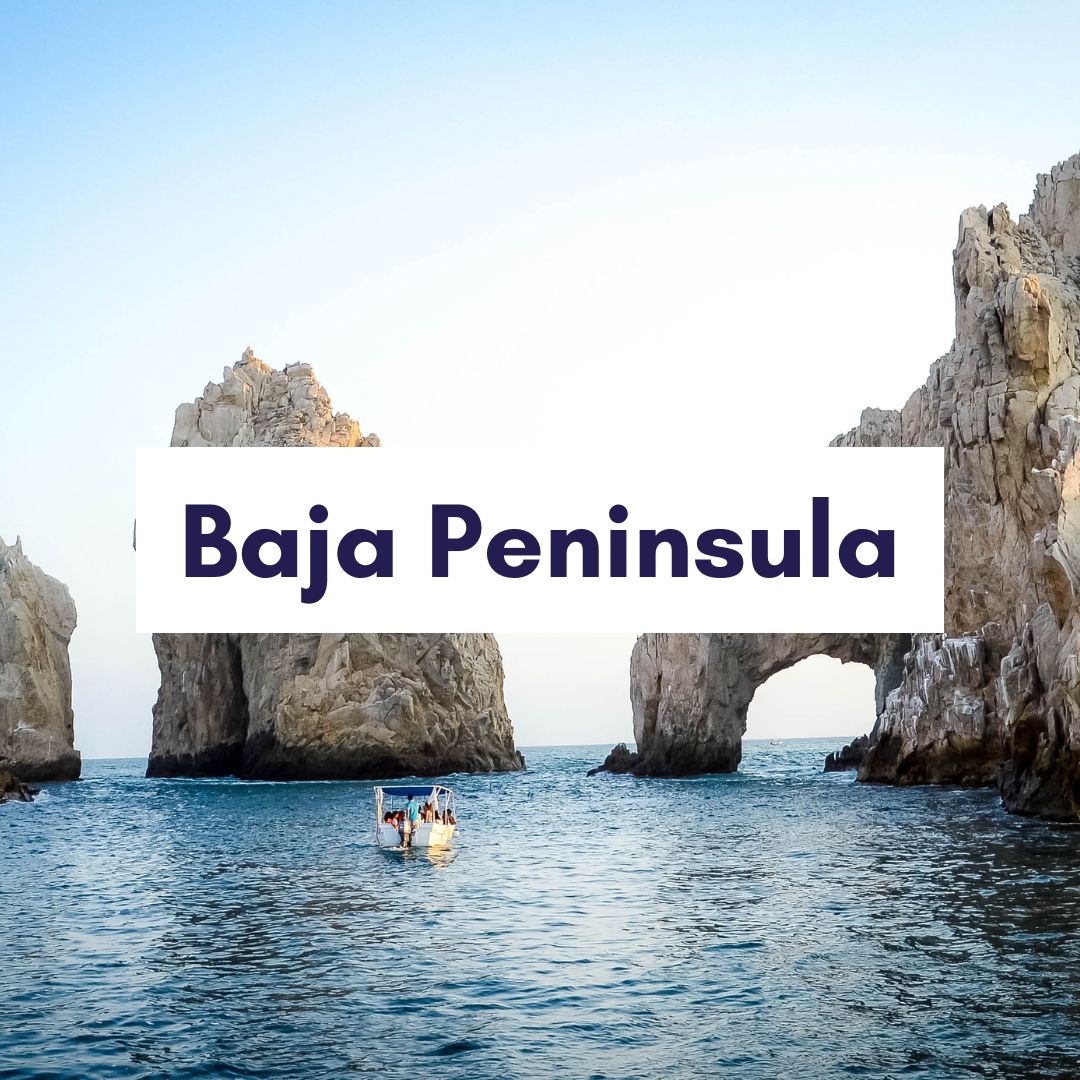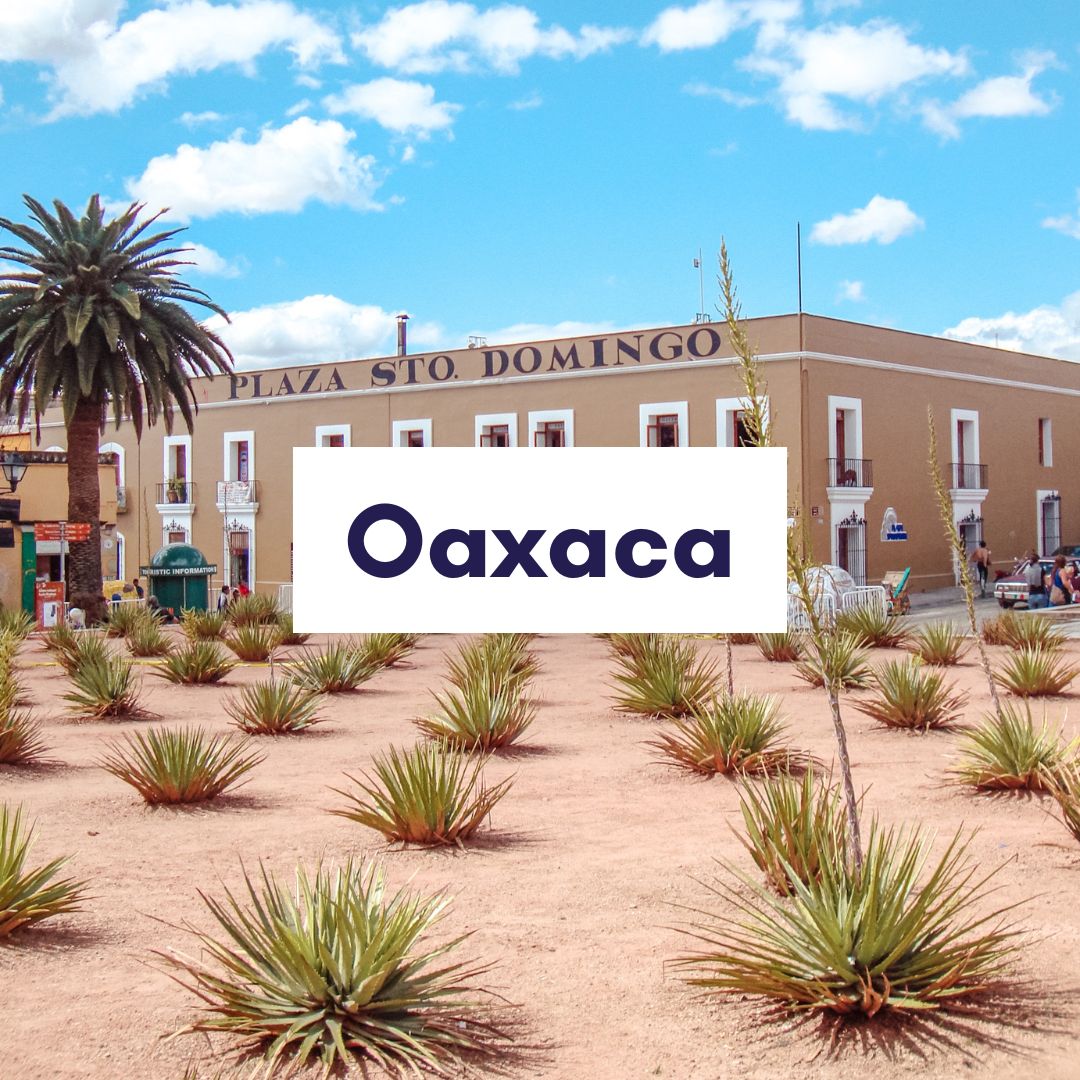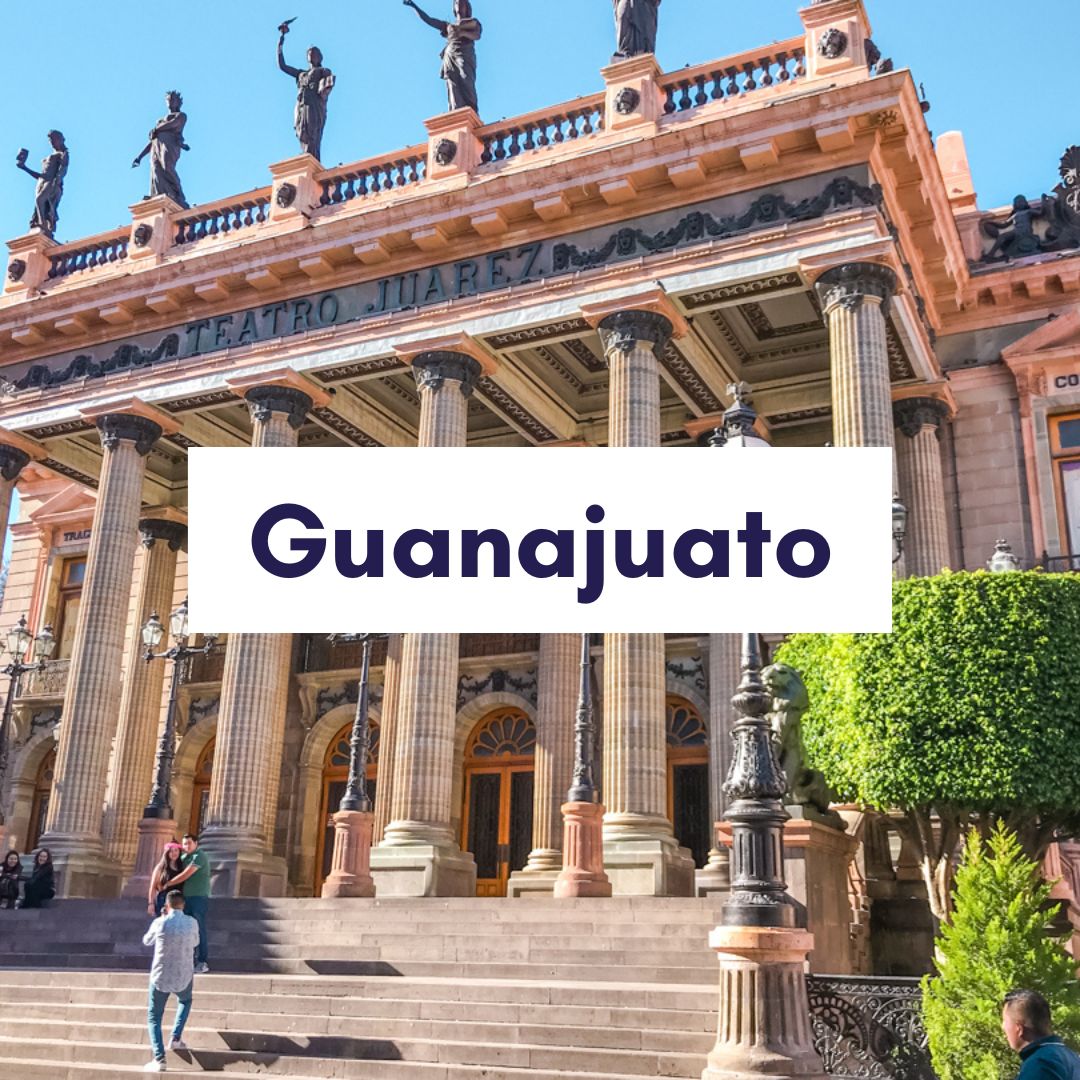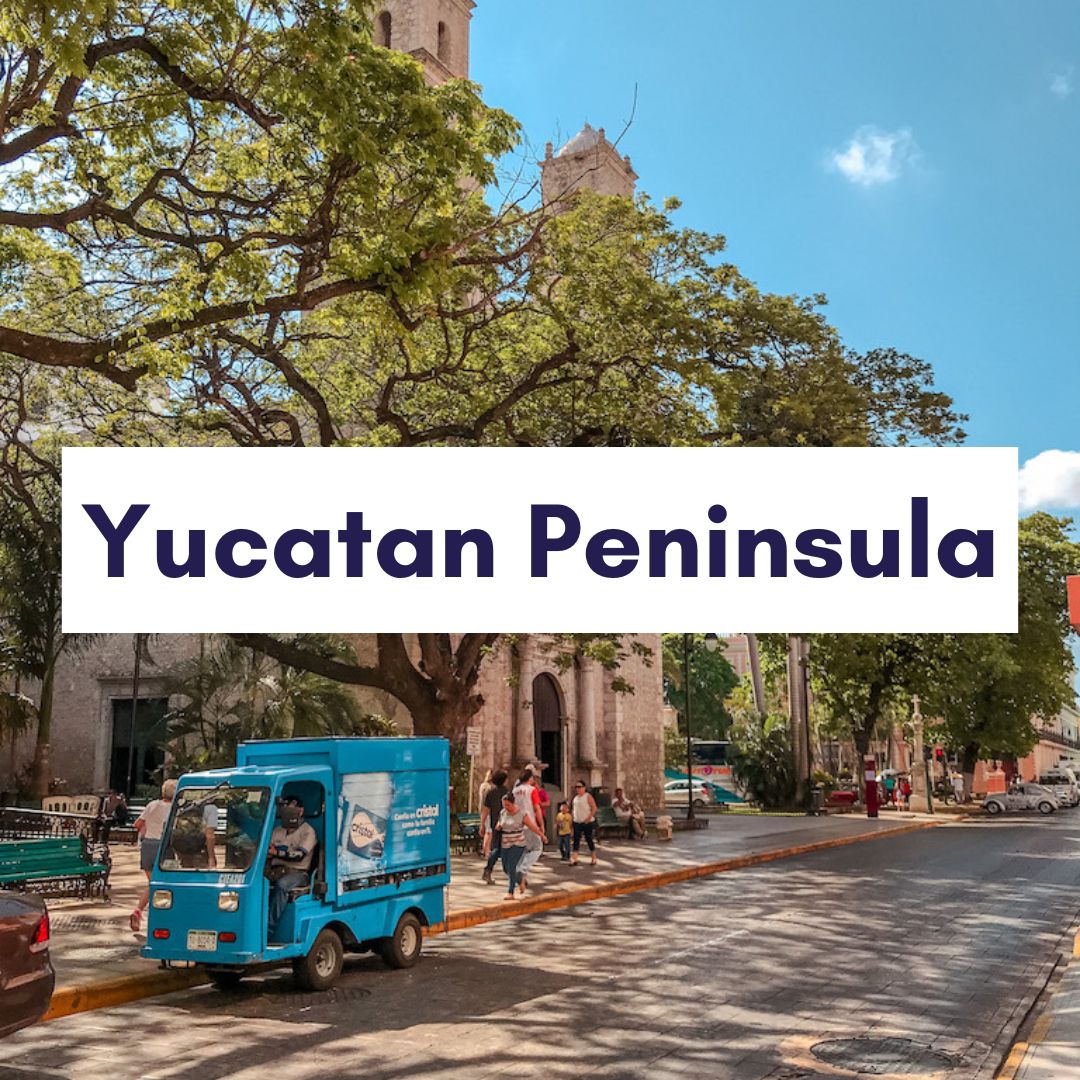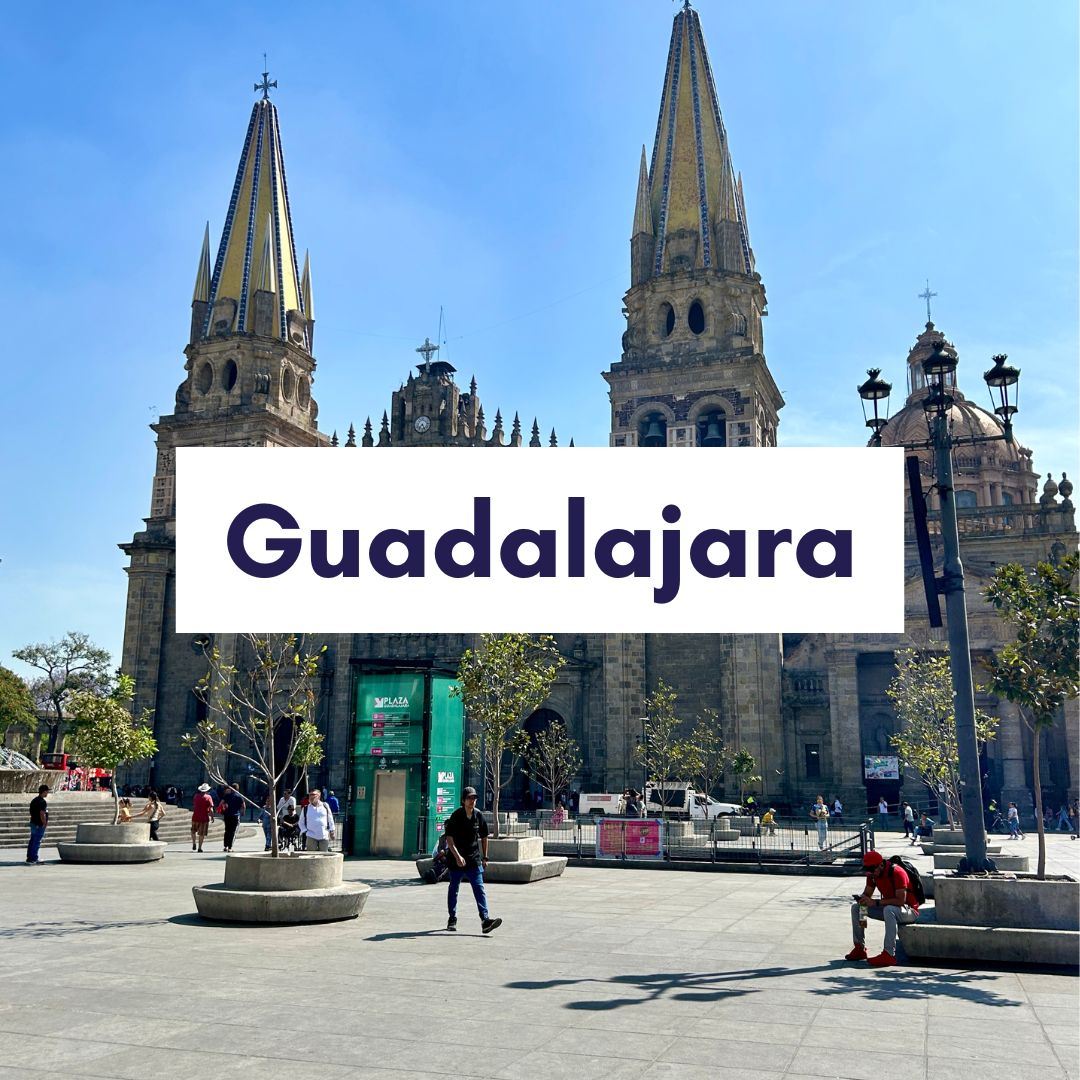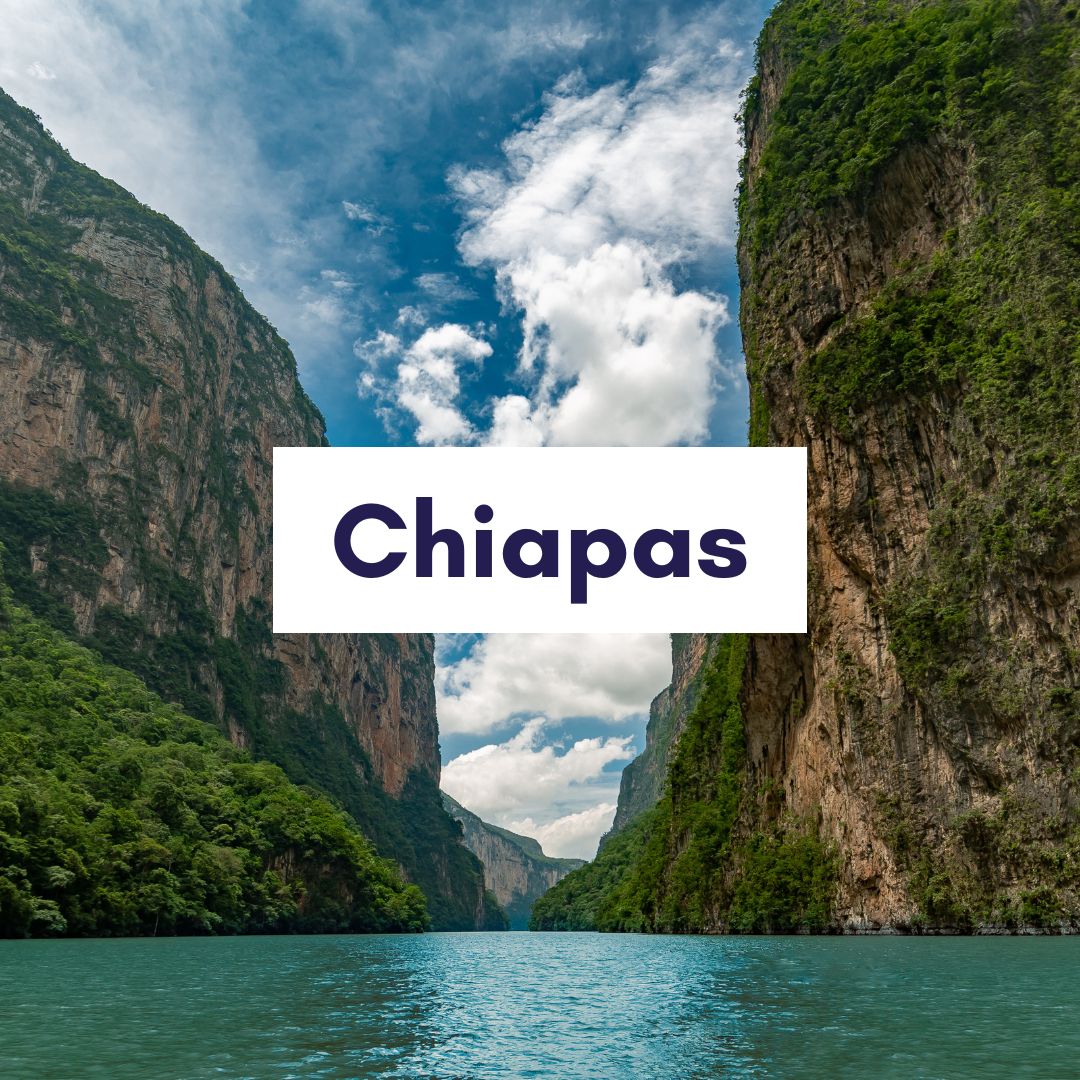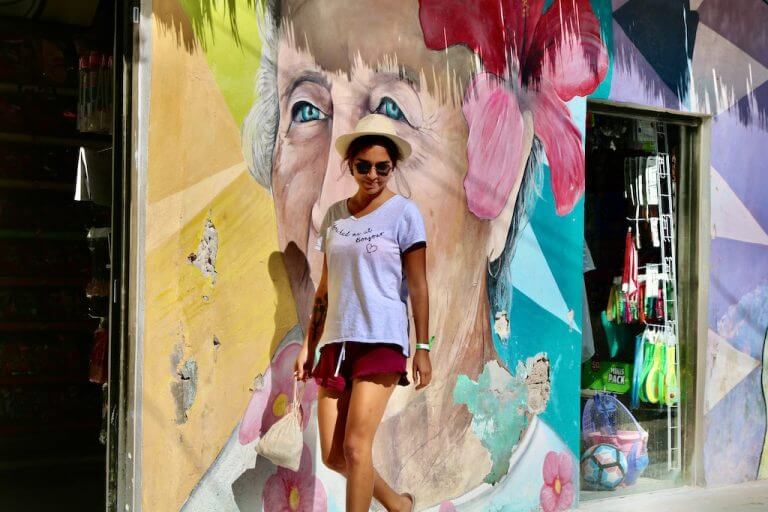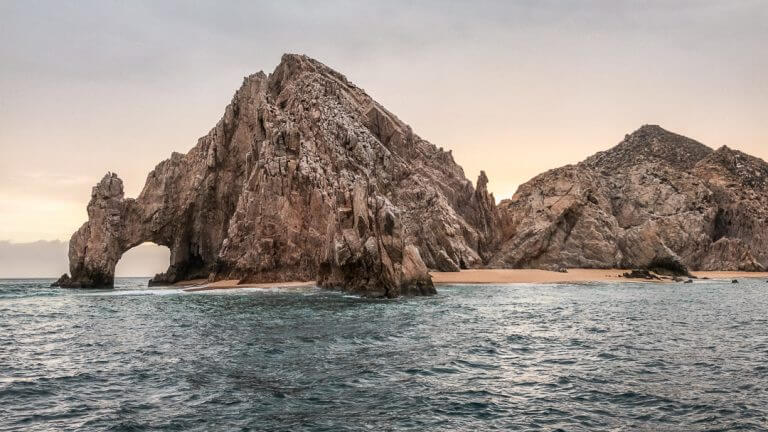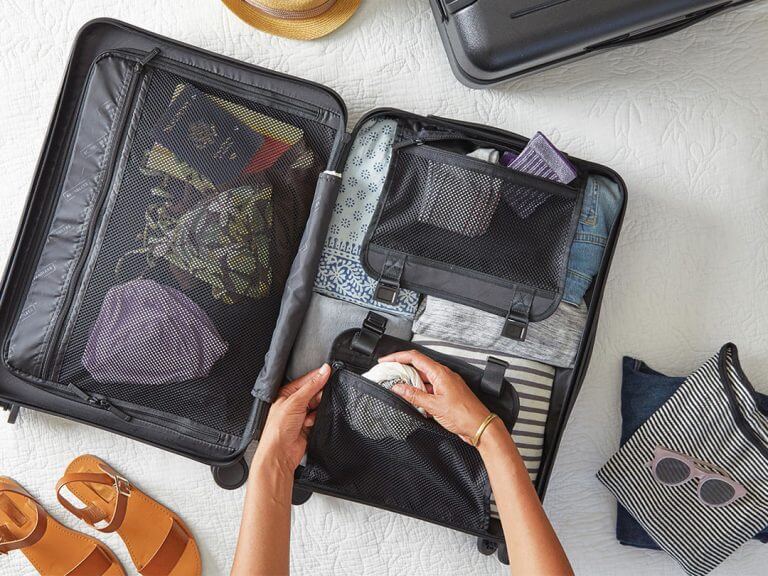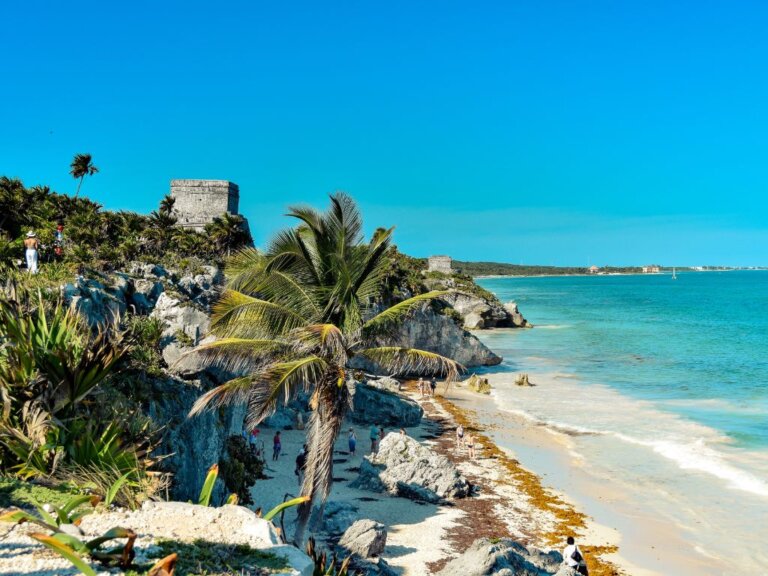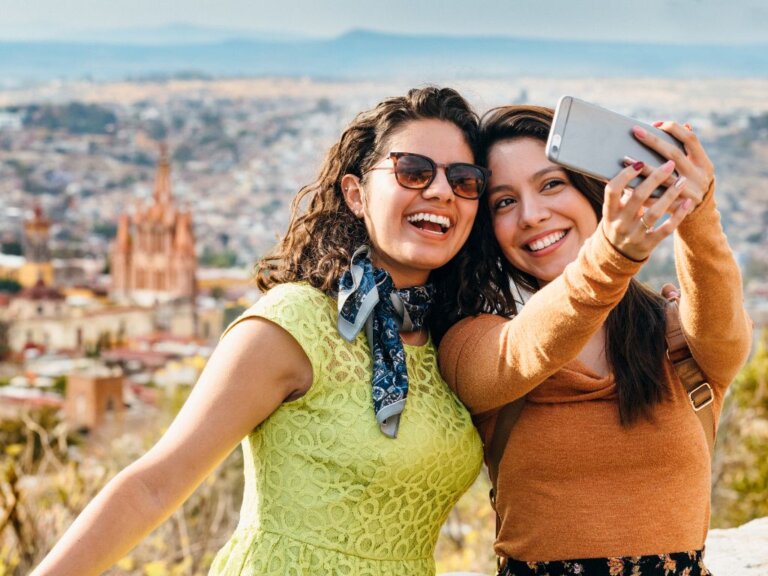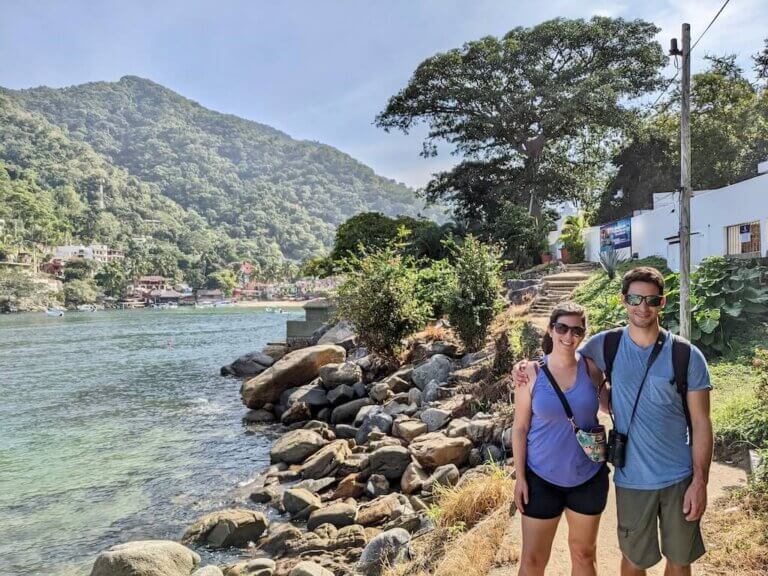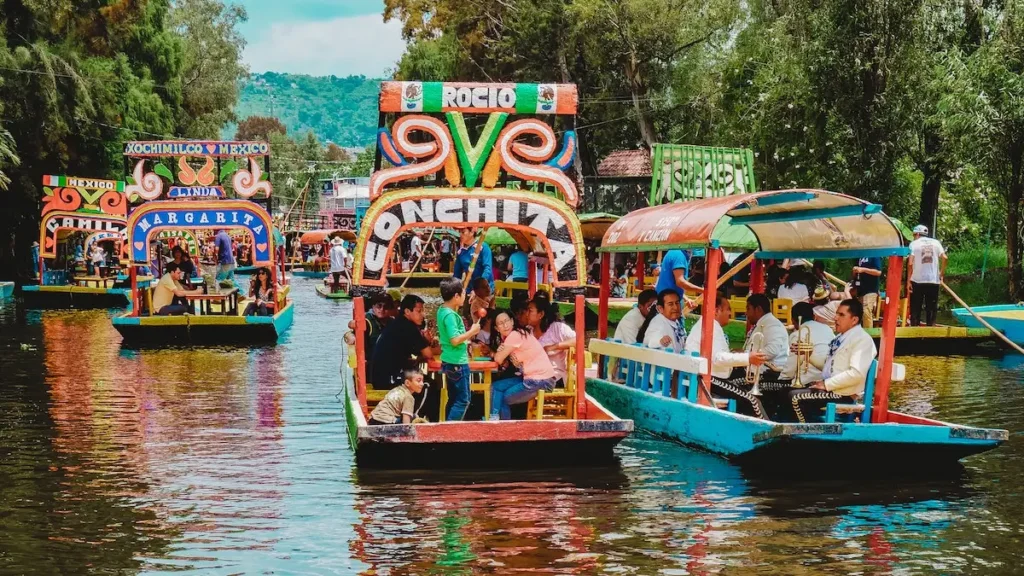
Mexico Travel Destinations
Ready to start planning a trip to Mexico? From this page, you can easily navigate to all of the Mexico destinations I’ve covered on this blog by clicking on the location-specific images. The Lesser-Known Destinations and Travel Inspiration tags are good spots to learn about new-to-you destinations!
Mexico Travel Guide
Mexico Travel Basics
Currency in Mexico: Mexican peso | Conversion rate (May 2020): 23 pesos = $1 USD. Check out my guide to money in Mexico for all kinds of tips on using ATMs, finding the best exchange rates, and protecting your finances during your travels.
Tipping in Mexico: Tipping is customary in Mexico but not in all the same situations as in the US. Plan to leave a tip of 10-20% in restaurants; do not tip taxi drivers. Check out my guide to tipping in Mexico before your trip.
Religion & Culture: Mexico is predominantly Catholic, though the country has no official religion.
Capital City: Mexico City
Country Size: Approximately 762,000 square miles
Population: Around 120 million people
Language: Spanish is the primary language but indigenous languages are spoken as well, including Nahuatl and many Mayan languages.
Essential Spanish Phrases: Knowing some basic Spanish is a great way to get off on the right food with locals. It will also help you feel empowered during your travels. The following are a few basic phrases to get you started.
- Please – Por favor
- Thank You – Gracias
- How much? – Cuánto?
- What time is it? – Qué hora es?
- Where is… – Dónde está…
- Beer – Cerveza
- ATM – Cajero
- Store – Tienda
If your Spanish skills are limited or rusty, be sure to pack a phrasebook. Lonely Planet has put together this awesome Mexico phrasebook, which is packed with handy phrases and quick-reference pages that will save you from embarrassing blunders and help you better interact with locals during your trip.
Best Time to Visit Mexico
Dry Season: November through April
Wet Season: May through October
High Season: November through April is Mexico’s high season. This is particularly true for resort areas like Cancun, Playa del Carmen, Puerto Vallarta, and Los Cabos, which draw snowbirds, spring breakers, and individuals looking for a break from cold winter weather.
If you’re looking for perfect weather and don’t mind crowds, this is a magical time of year to visit Mexico.
Low Season: May through October is Mexico’s low season. During these months, the resort areas are hot, humid, and prone to intense rain showers, making them less enjoyable than in the winter months. Additionally, hurricane season stretches from June through October.
If you’re willing to brave the heat and take your chances with the rain, you can find really affordable rates in Mexico’s resort destinations during the low season.
This is also a good time to visit Mexico’s cities. The weather may be hot and muggy, but you can find indoor activities when the rain comes on. Plus, many of the cities are a little calmer, as many locals tend to go out of town in the summer, especially on weekends.
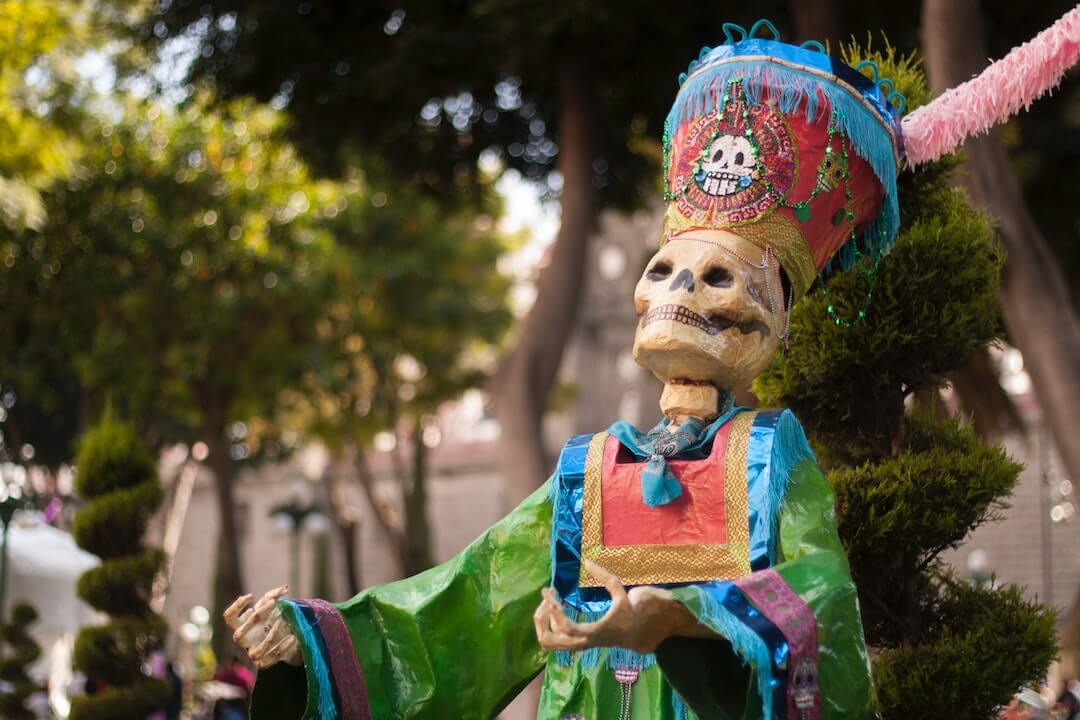
Major Holidays and Events in Mexico
Mexico’s events and holidays can be fun to witness. But even if you’re not interested in taking part, it’s good to know when they fall as they may increase congestion or drive up prices in certain cities.
I’ve also listed a few of the main events below to get you started. Check out my guide to Mexican holidays and traditions for a more in-depth look at some of Mexico’s holidays.
Semana Santa (Easter Vacation): Semana Santa is a two-week Easter holiday that occurs in Mexico. While this is a religious holiday, families often venture to Mexico’s beaches. This makes for a lively time, but it also drives up prices and can make it hard to find accommodation during this period.
This is a busy time at the beach, so if that’s not your thing, consider visiting Mexico’s inland cities during this period. Since many people are on vacay, they’re much calmer and less congested.
Guelaguetza: La Guelaguetza is a cultural festival that takes place in Oaxaca City every year in July. The event attracts attendees from throughout Mexico and the world and is an amazing spectacle that features performances of traditional music and dance from throughout Oaxaca.
Festival Internacional de Cervantino: This music and art festival occurs in Guanajuato City every October. During October, visitors flock to Guanajuato to take in the incredible performances highlighting art and culture from around the world.
Mexican Independence Day: Mexico’s Independence Day is commemorated on September 15th and 16th every year. While it is celebrated throughout the country, the biggest celebrations take place in Mexico City and Dolores Hidalgo, Guanajuato.
Day of the Dead: Day of the Dead is celebrated throughout Mexico from October 31 through November 2nd. In recent years this tradition has begun to attract visitors from outside the country. Mexico City, Guanajuato, Oaxaca, and Merida all have large Day of the Dead celebrations that welcome participation from foreign visitors. As a result, occupancy rates in these cities are high
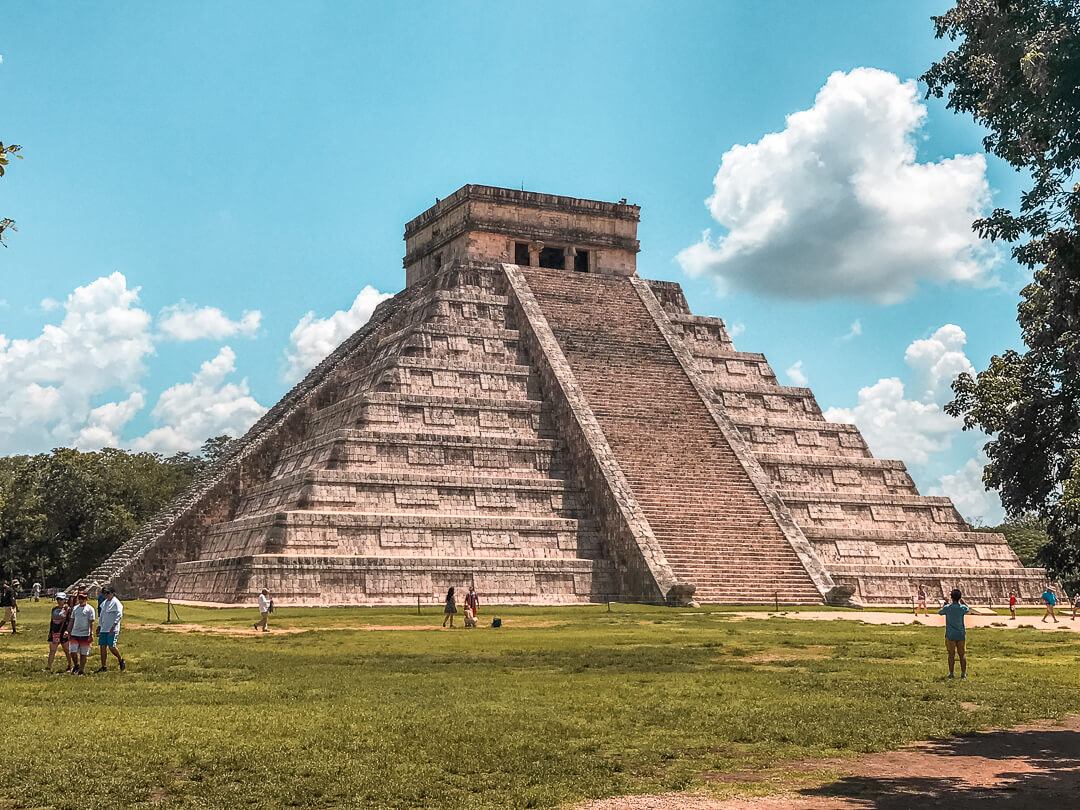
Most Popular Mexico Travel Destinations
Beaches: With over 9,000 kilometers of coastline, Mexico has no shortage of idyllic beaches to visit. You’ll find built-up resort towns, laid-back boho enclaves, surf destinations, and everything in between. Check out my guide to Mexico’s best beach towns for help choosing the best beach destination for you!
Colonial Cities: Mexico’s colorful colonial cities are picturesque and packed with culture. From the artsy community of Guanajuato to the culinary hub of Oaxaca, the bohemian culture of Xalapa, or the nature-oriented San Cristobal de las Casas in Chiapas, each of Mexico’s cities has it’s own distinct and alluring vibe.
Riviera Maya: The Riviera Maya is one of the most popular travel destinations in Mexico, and for good reason. The beautiful white-sand beaches and turquoise sea make it a pretty idyllic setting for a relaxing, sun-soaked vacation. The luxurious resorts, chic boutique hotels, thrilling aquatic adventures, and fascinating archaeological sites are all just bonuses.
Check out my guides to Playa del Carmen, Cozumel, and Tulum to learn more about how to make the most of your visit to this region.
Yucatan Peninsula: Mexico’s Yucatan Peninsula offers an incredible cross-section of all that makes Mexico a fascinating destination. Made up of three states, Campeche, Yucatan, and Quintana Roo, this region is known for beautiful colonial cities like Merida and Campeche, stunning white-sand beaches like those of Tulum, and lush jungles such as the Calakmul Biosphere Reserve. You can also enjoy beachfront resorts, thousands of cenotes, ancient ruins, incredible food, and so much more.
Ancient Ruins & Cultural Sites: Mexico is home to 35 UNESCO World Heritage Sites and nearly 200 archaeological sites that welcome visitors. Whether you’re interested in Mexico’s history or not, it’s almost inevitable that you will find yourself in one of these sites during your Mexico trip!
Check out this round-up of Mexico’s most intriguing ruins for inspiration!
Mexico City: Mexico’s lively capital is home to all kinds of enticing adventures. From foodie experiences, cultural events, historical sites, diverse neighborhoods, and beyond, there’s something in Mexico City for everyone. And, if you find yourself needing a break from the city, there are countless awesome day trips from Mexico City that are sure to appeal. Check out this 4-day Mexico City itinerary for more ideas!
Natural Beauty and Outdoor Activities: Mexico has plenty to offer for outdoor enthusiasts. You can find incredible diving to hiking, whale watching, or just appreciating the views if you prefer. Check out these outdoor adventures for more inspiration!
Further Reading:
25+ Incredible Mexico Bucket List Experiences
18 Incredible Destinations for Solo Travelers in Mexico
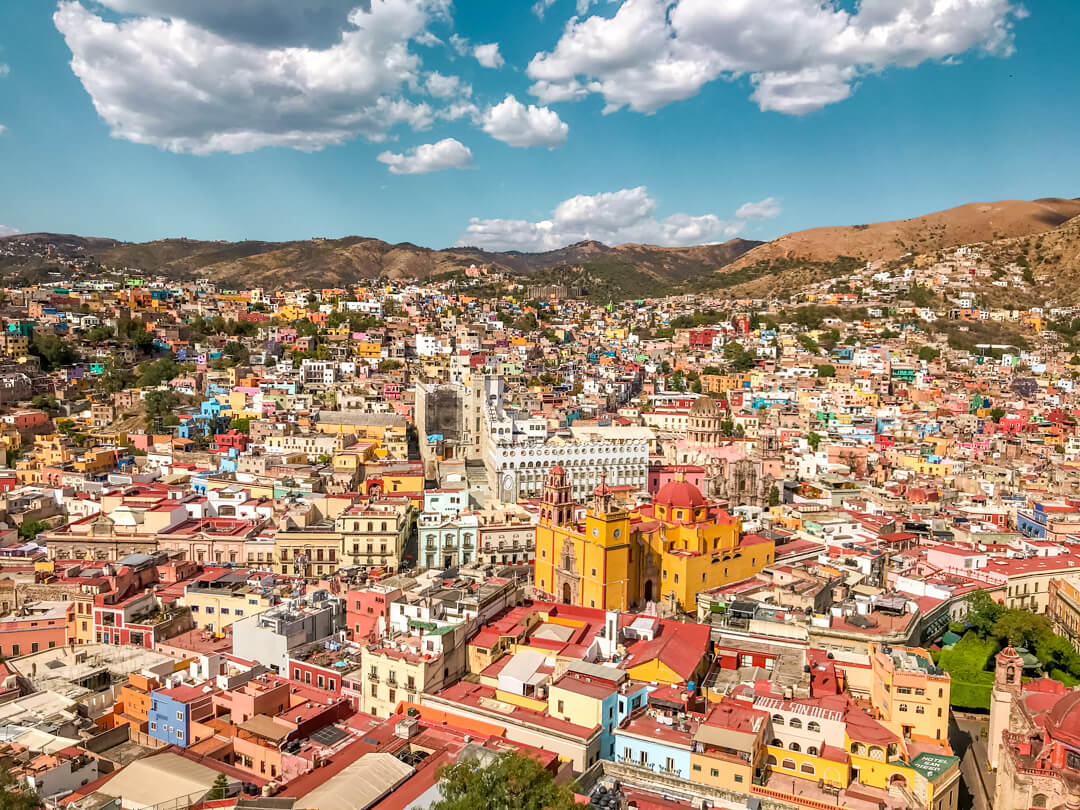
How to Get Around: Transportation in Mexico
Local Transportation: Within Mexico’s cities your transportation options are pretty standard: local buses and taxis.
If you can make sense of the bus routes, local buses usually cost between 8 and 12 pesos per trip.
Taxis are a good alternative if you prefer direct transportation. The rates vary depending on the city you’re visiting but taxis are very affordable. Always determine the fare before you get in the vehicle to eliminate any confusion about pricing.
Mexico City has an extensive metro system which is a convenient and affordable way to get around, just avoid traveling at peak hours as it can become extremely crowded.
Some cities in Mexico have Uber, but not all of them do. If it’s an option, Uber is my favorite way to get around Mexico’s cities. The rates are much lower than in cities in the US, and the fact that you don’t need cash makes the service super easy and convenient to use.
Bus: Bus is one of the most popular ways to travel in Mexico. Bus travel is safe, affordable, and an easy way to reach almost any destination in Mexico. Check out my guide to bus travel in Mexico for tips on how to make the most of Mexico’s bus system.
Pro Tip: Use Busbud or BookAway to book bus tickets in Mexico.
Rental Car: Rental car is a great way to get around Mexico, especially if you’re planning to visit more rural destinations. In big cities, a vehicle usually isn’t necessary, and parking can be a challenge, but they are a great option for road trips and day trips. For safety reasons, avoid driving at night and stick to toll roads (“cuotas”) whenever possible.
When it comes to arranging car rentals, Discover Car Hire makes it easy to find the best rates.
Flying: Flying can be a convenient way to get from one region of Mexico to another. The country has a handful of national airlines and rates are usually quite reasonable. Often you can score a cross-country flight for around the same amount as you’d pay for a bus ticket. So, even if you’re traveling on a tight budget, don’t write off flying as “too expensive!”
The only hang-up with flying is that many flights are routed through Mexico City, which adds a lot of time to an otherwise short journey. It may not save you a lot of travel time, but for long distances, flying is probably more comfortable than a bus.
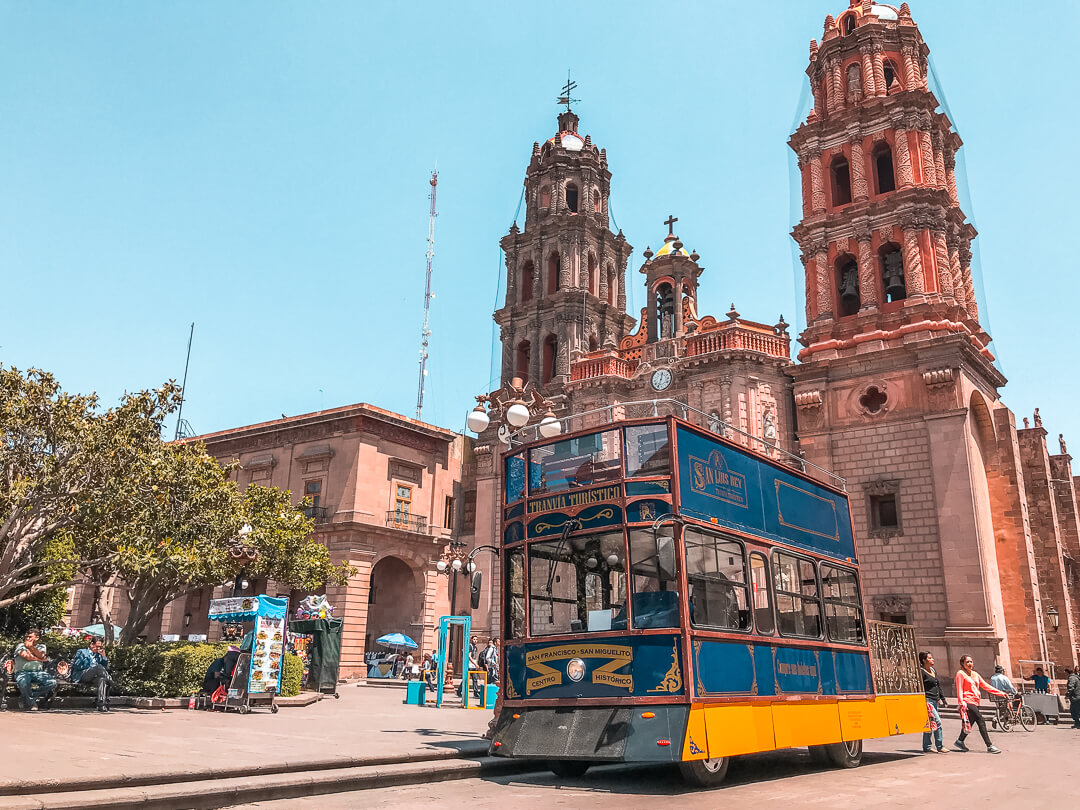
How to Stay Safe in Mexico
Between the media coverage and unsolicited warnings from strangers any time the subject comes up, it’s natural to become uneasy about the prospect of traveling Mexico solo. But, many women travel Mexico solo every year (and some of us even move here!) and have a perfectly wonderful time.
However, it’s always important to take safety precautions anywhere you go, especially as a solo traveler.
Petty theft is a problem in Mexico, especially in crowded, touristic areas. With this in mind, it’s important to stay vigilant. An anti-theft purse or anti-theft clothing can offer peace of mind as well. It’s also wise to keep a spare credit card, and copies of your passport and ID stashed in a safe place.
It’s not uncommon for visitors to Mexico to experience traveler’s diarrhea, but usually, this will pass quickly and can be managed with Imodium tablets. If you need to see a doctor, many of Mexico’s pharmacies have doctors on-site who can assist with general illnesses and ailments free of charge (they make money when you purchase prescriptions).
Even though I’ve been traveling within Mexico for years without incident, I highly recommend investing in a travel insurance policy. You can purchase coverage to protect against theft, assault, medical expenses, dental, trip interruption, and more.
SafetyWing is my go-to travel insurance provider. They offer affordable policies that are tailored to your trip and your needs.
What to Pack for Mexico
Your Mexico packing list will vary depending on where you’re headed in the country. Be sure to research the climate of your destination before your go– it’s not all sunshine and palm trees.
On my early visits to Mexico, I definitely made the mistake of assuming the climate would always be warm… and I wound up freezing my butt off in Guanajuato in December. Don’t be like me!
Weather concerns aside, there are a few essentials I recommend bringing with you for any Mexico destination.
- Reusable water bottle: Since the tap water in Mexico usually isn’t drinkable, you will have to rely on bottled water. If you carry your own bottle you’ll be able to refill at your accommodation instead of purchasing single-use bottles during your trip. I love my HydroFlask because it’s insulated, durable, and easy to clean.
- Cloth shopping bag: Mexico is beginning to reduce the use of single-use plastic bags, so having your own will come in handy. Baggu makes super-durable bags with cute patterns, plus they fold up small enough to stick in your purse.
- Battery Pack: As a solo traveler, staying connected also helps you stay safe. Carry a backup power bank for your phone so you easily call an Uber, access your translation app, make use of Google maps, or stay in touch with loved ones throughout your trip.
- Anti-Theft Purse: After my boyfriend got pickpocketed on the Mexico City metro, I bought an anti-theft purse and never looked back. Even though I’ve never been pickpocketed, it gives me peace of mind knowing that my valuables are safely stowed on the other side of a locking zipper.
- Spanish Phrasebook: If you’re not a fluent Spanish speaker, a phrasebook will definitely come in handy for asking questions and interpreting responses. This Lonely Planet phrasebook is specific to Mexican Spanish and has handy quick reference pages and translations for colloquial language that you will surely encounter. You can opt for a digital version or a pocket guide, whichever you find most convenient.



